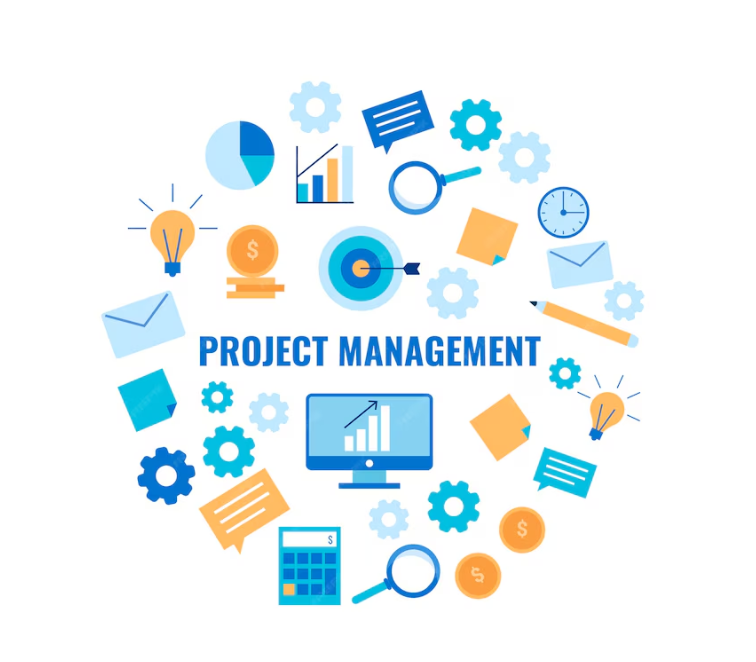Product management is a dynamic and crucial function within modern businesses that bridges the gap between business objectives and customer needs. Strategic planning, development, and implementation of a product’s lifecycle—from inception to market launch and beyond—are all part of product management. This role ensures that products meet market demands, align with the company’s goals, and drive business growth.
This comprehensive guide is tailored for individuals who are new to product management or have a basic understanding but seek a deeper, more structured knowledge of the field. Whether you’re a recent graduate, a professional looking to transition into product management, or an entrepreneur aiming to launch a successful product, this guide provides valuable insights and practical advice.
As you explore this guide, you will gain a thorough understanding of what product management entails, the strategic functions of a product manager, and the processes involved in bringing a product to market. Additionally, we will introduce you to our Product management course, designed to equip you with the skills and knowledge needed to excel in product management. Our course offers in-depth training, real-world applications, and access to industry experts to help you navigate and succeed in the dynamic field of product management.

Product management is an essential discipline that plays a pivotal role in the success of any product-driven company. This ultimate guide aims to provide you with a comprehensive understanding of product management, covering everything from fundamental concepts to advanced strategies. Here’s an overview of what you can expect to learn:
Product management is a critical function within an organization that focuses on the planning, development, and execution of a product’s lifecycle from inception to market introduction and beyond. It serves as the intersection of business, technology, and user experience, ensuring that products not only meet customer needs but also align with the company’s strategic goals and deliver tangible business value.
At its core, product management involves:
Product management has evolved significantly over the years. It originated from the need to have a dedicated role that bridges the gap between what customers want and what a company can deliver. Initially focused on product development and project management, the role has expanded to encompass strategic planning, market analysis, and a deeper understanding of the user experience.
Product managers play a crucial role in the success of a product by bridging the gap between different stakeholders and ensuring that the product meets both customer needs and business objectives. They are responsible for the product’s vision, strategy, roadmap, and feature definition. Here’s a detailed look at the role of a product manager:
Effective product management is vital for several reasons:
Product management is not just about managing the development and launch of products; it is fundamentally about driving strategic initiatives that align with a company’s overall business goals. By effectively linking product strategy with business objectives, product managers play a crucial role in ensuring that the company’s products contribute to its long-term success and market competitiveness.
One of the primary responsibilities of a product manager is to ensure that the product strategy aligns with the broader business objectives. This involves:
A strong product vision and strategy are essential for guiding the product development process and ensuring that the team is focused on the right goals. Here’s how to build an effective product vision and strategy:
To illustrate the importance of aligning product strategy with business goals, consider the following case study:
Company: Tech Innovations Inc. Objective: Increase market share in the enterprise software segment.
The product management process is a structured approach to bringing a product from idea to market and beyond. It involves multiple stages, each critical to ensuring that the product meets customer needs, aligns with business objectives, and delivers value. Here’s an in-depth look at the key stages of the product management process:
The first step in the product management process is to identify and clearly define the problem that the product aims to solve. This involves:
Once the problem is defined, the next step is to assess the potential impact and feasibility of solving it. This involves:
With a clear problem and quantified opportunity, the next step is to explore and validate potential solutions. This involves:
Once a solution is selected, the product development phase begins. This involves:
After development, the product is prepared for launch. This involves:
The product management process doesn’t end with the launch. Continuous improvement is essential to ensure long-term success. This involves:
The first step in the product management process is to clearly define the problem that the product aims to solve. This step is crucial because a well-defined problem lays the foundation for developing a successful product. Here’s how to effectively define the problem:
After defining the problem, the next step is to assess the potential impact and feasibility of solving it. This involves evaluating the market size, potential revenue, and competitive landscape to ensure that addressing the problem is a viable business opportunity. Key activities include:
With a clear problem and quantified opportunity, the next step is to explore and validate potential solutions. This involves generating ideas, prototyping, and testing to find the most viable solution. Key steps include:
Product roadmaps are essential tools in product management that provide a visual summary of the product vision and direction over time. They outline the strategic goals, timelines, and milestones for product development and serve as a communication tool for aligning stakeholders around the product strategy.

Product management can vary significantly depending on whether the product is aimed at businesses (B2B) or consumers (B2C). While the core principles of product management remain the same, the strategies, priorities, and challenges can differ. Understanding these differences is crucial for developing effective product management approaches tailored to each market.

Optimizing product management operations is critical for maximizing efficiency, improving product quality, and ensuring that products meet customer needs and business goals. This involves streamlining processes, enhancing collaboration, leveraging data, and continuously improving the way the product team works. Here are some key strategies for optimizing product management operations:
Agile product management operations focus on flexibility, continuous improvement, and customer-centric development. By adopting agile methodologies, product teams can respond quickly to changes, deliver incremental value, and maintain a high level of collaboration and efficiency. Here are key principles and practices for implementing agile product management operations:
Product management is a dynamic and multifaceted role that plays a crucial part in the success of a product. From balancing competing priorities and navigating market uncertainties to ensuring cross-functional collaboration and managing the entire product lifecycle, product managers face a myriad of challenges. However, by adopting agile methodologies, leveraging data-driven decision-making, and fostering a customer-centric culture, these challenges can be effectively addressed.
Understanding the key differences between B2B and B2C product management, optimizing operations, and staying adaptable are essential strategies for any product manager aiming to excel in this field. Continuous improvement and a strong focus on delivering customer value are at the heart of successful product management.
For those looking to deepen their expertise and advance their career in product management, the Young Urban Project offers the best product management course. Our comprehensive program is designed to equip you with the necessary skills and knowledge to excel in this dynamic field. Enroll now and take the next step in your product management career!
Explore
Copyright © 2025 Young Urban Project
